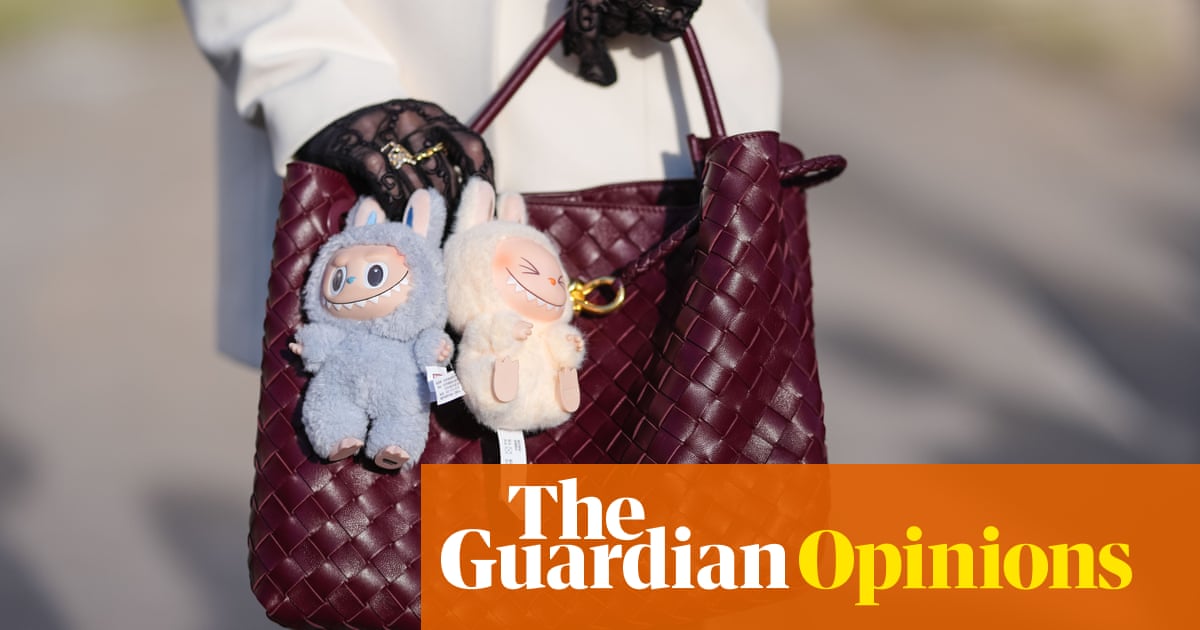Labubu dolls first hit the market in 2019, but in 2025, they’re sustaining a viral moment. We should ask ourselves why.
News.com.au reportsthat recent “drops” of the toy in Australia have seen queues form for blocks around its distributor, Pop Mart, with 3am-risers racing to meet the arrival of restocked merchandise. A Pop Mart spokesperson insists such a mania in pursuit of the highly-collectible plushies and miniatures has gripped Australia “like never before”.
If this isn’t aggressive sales hyperbole, it’s an admission of touching innocence from someone too young to know about theCabbage Patch Kid riotsof 1983, theTamagotchi State Repressionof 1996 or the brawl economics of theBeanie Baby bubblein the late 1990s. Child, sit by me, and let me tell you the tale of when I, as a nine-year-old, somehow blackmailed my mother into chaperoning me to the Northgate shopping centre, Hornsby, before dawn, so we could be first in line to acquire a soft-bodied, vinyl-faced Cabbage Patch Kid with a unique birth certificate. “Fifty bucks for that thing,” my incredulous mother said, forever thereafter, whenever my prized adoptee entered her field of vision. “Fifty bucks!”
Ah, but what price for childhood joy? Well, you can snaffle Labubu keychain figures for a lobster or two, but joy’s price tag comes in at A$300 for some popular models of Labubu on eBay, and goes up to a truly eye-popping $1,580 for some items on the Pop Mart website.
The queues and the cost aren’t the only reason for media interest in the fad. The explosion of Labubu popularity can be traced to the appearance of the toy, not with aspirational child models in a heavily-capitalised, after-school-television marketing campaign, but in the possession of adults. Lisa from K-pop band BlackPink wasphotographed with oneof the miniatures dripping from a luxury handbag last year. The Barbadian iconRihannafollowed suit. Then everyone was in on it.
What’s the aesthetic appeal? Uh, subjective! The dolls are the creation of Hong Kong-born, Netherlands-raised artist Kasing Lung, who was inspired by Nordic mythology when he created his “Monsters” characters for a series of picture books in 2015, of which Labubu is but one. The style that emerged (and has since been rendered by brand partnerships into fluffy polyester and vinyl) most resembles what would happen if a Cabbage Patch Kid had a love child with a Tim Burton Nightmare Before Christmas claymation and then grew up to be a bunny furry. Cute fluffy ears are quite the contrast with sharp-looking teeth; some wear farmers’ overalls, others what appear to be trans-pride helmets. You can dress them yourself – people do, look up the hashtag on Bluesky – or accessories are available for purchase. Pop Mart will generously sell you tiny plastic shoes for $22.
The hybrid visual identity of the object provides a neat metaphor for the hybrid marketing assault that has stoked its popularity. It’s not just that the doll speaks to a contemporary K-pop/anime aesthetic that has achieved near-global familiarity. Pop Mart has also replicated the restricted-supply concept of distribution that drove the Beanie Babies craze, releasing waves of variations, some in very limited numbers, and then cutting them off – creating hype around new releases, as well as the use of collectibles markets like eBay as an ongoing, unpaid-for marketing front.
Add to this, Labubu are predominantly sold in “blind boxes”, like theLOL Surprise Dolls of 2017; at purchase, you don’t know which precise model of Labubu you’ll acquire. There’s a lottery element of possibly acquiring a rare doll with a higher potential resale value than others. No wonder the Pop Mart spokesperson was able to claim to News.com.au: “This isn’t just about ‘toys’ but a collectible, pop-culture movement.”
That this “movement” is targeted not to children but to adults is the other conspicuous difference here. The queues, the celebrity vaunting and the online fandoms exist in a conspicuously grown-up consumer conversation. Men’s fashion mag GQ has already run an article about the doll asa popular accessory in the growing market of men’s luxury handbags.
The American design academic Gozde Goncu Berk observes that trends exerting this level of heftdo not exist in a vacuum; they are embedded in a cultural context. Fads catch on because they encapsulate a convergence of social anxieties, technological shifts, and shared desires that we may struggle to articulate but attach to with instant familiarity.
In this framework, the doll becomes a totem for collective introspection. Like blockbuster comic book adaptations, Ghostbusters reboots, adult colouring books, video games, Lego masters and the increasing popularity ofdollhousing, maybe Labubu offer a retreat into an illusion of childhood simplicity, to escape the complexities that presently overwhelm our adult world. We might consider that in a consumer society where possession defines us but has already stuffed300,000 objectsinto the typical home, a doll on a handbag represents the desperate seizure of a diminishing real estate opportunity. In a moment of global markets and – now, thanks to AI – mass production of everything, maybe the fantasy of limited availability substitutes for creativity or specialness. Maybe a fluff ball with a monster face is the comfort object that today’s bleakness recognises.
But if we’re getting up at 3am to queue for them, friends, one thing is certain. We are the Labubu. And the Labubu is us.
Van Badham is a Guardian Australia columnist
